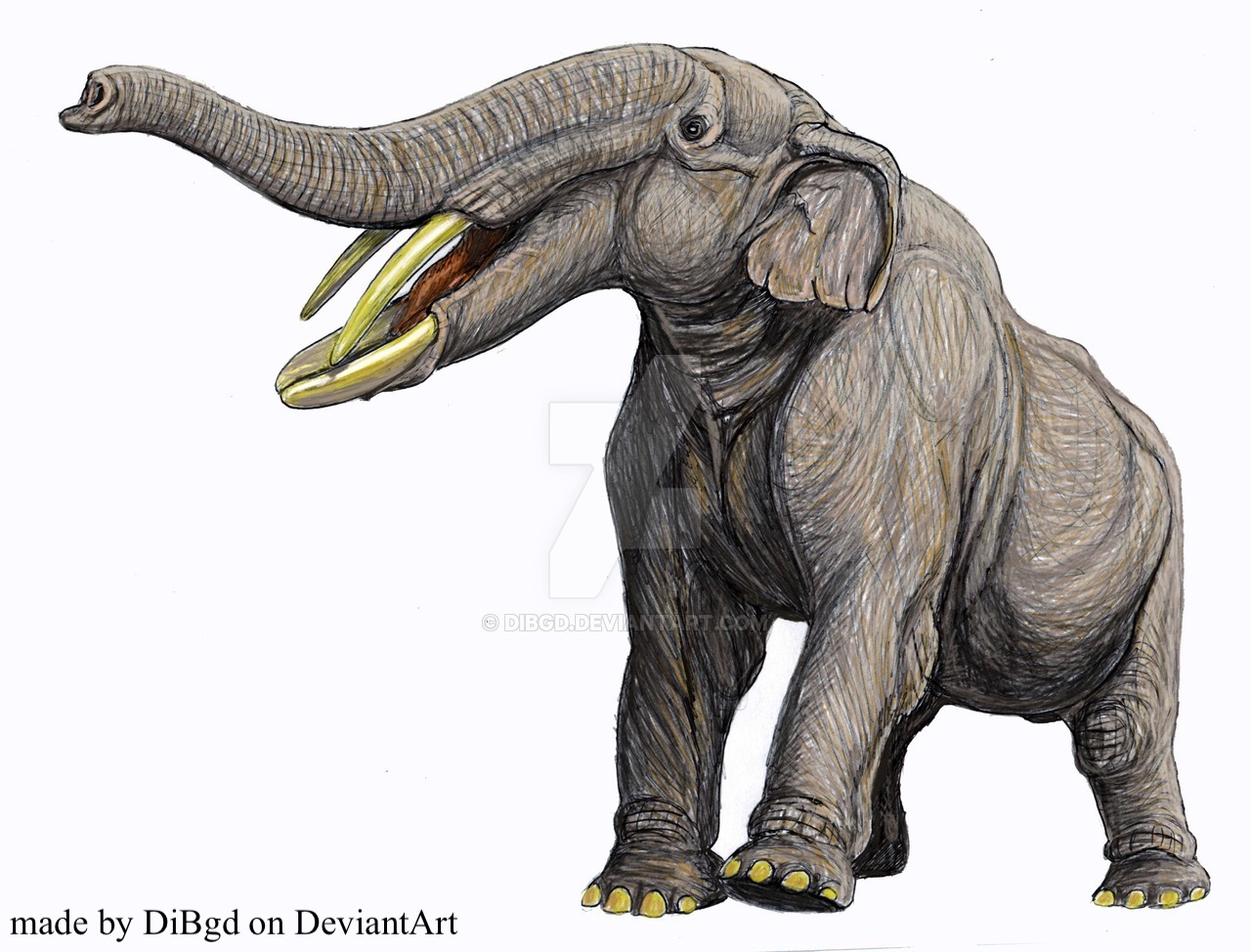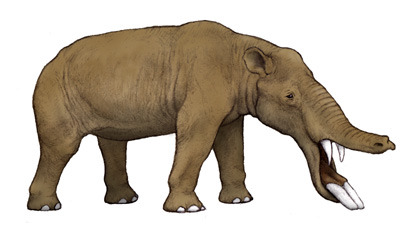Welcome to Amebelodon

Name Definition
Shovel tooth
Name Given By
Erwin H. Barbour in 1927 | A. fricki ; Joseph Leidy in 1868 | A. floridanus
Location
Great Plains and the Gulf Coast Region of the United States in North America
Classification
Mammalia, Afrotheria, Proboscidea, Elephantida, Amebelodontidae
Size
approximately 3 meters tall at the shoulder, around 4 meters long, approximately 10 - 11 tons (around the same as Columbian mammoth) | depends on the species
Temporal Range
Tortonian - Messinian stages of the Miocene, approximately 9 - 6 million years ago
Ecological niche
large and versatile herbivore
Species/Sub Species
A. fricki (type species), A. floridanus
Diet
Amebelodon would have been a browser and would have fed on broad leaved plants but it would also be able to eat tree leaves given its large size
Introduction
Amebelodon is a genus of extinct proboscidean mammals that lived in North America during the Miocene epoch of the Neogene period. Amebelodon means “shovel tooth” in reference to its shovel shaped tusks that grew out of its mouth, a common feature in many other amebelodonts. Currently there are only two valid species in the genus, Amebelodon floridanus and Amebelodon fricki.
Amebelodon first appeared in the Great Plains and the Gulf Coast of the United States around 9 million years ago in the Late Miocene, with A. fricki in the Great Plains and A. floridanus in Florida which is part of the Gulf Coast. Amebelodon then went extinct in North America approximately around 6 million years ago, though the youngest fossil remains of Amebelodon are known from a 5 million year old site in North America. Amebelodon floridanus was the smaller species and was common in North American sites around 9 - 8 million years old, while Amebelodon fricki was more common and larger and would have lived around 7 - 6 million years ago as it was younger than A. floridanus. There have been a few species previously placed in the Amebelodon genus that have been placed in a new but closely related genus, Konobelodon, formerly classified as a subgenus of Amebelodon. These species include K. britti from North America and K. cyrenaicus from North Africa. While the amebelodonts were initially classified in the Gomphotheriidae family, recent authors suggest that some of the elephants in the Gomphotheriidae were in a distinct family which was the Amebelodontidae.
Similar to most prehistoric elephants, Amebelodon possessed two sets of tusks, the typical curved and slender tusks like those in modern elephants, and the shovel shaped tusks growing out the end of its lower jaw. However, the tusks of Amebelodon were distinctive as they were flattened, long, and slender from a horizontal perspective, much like shovels which it is named after. This is comparable to the other shovel tusked elephant Platybelodon. It has long been assumed that these tusks were only used for feeding purposes such as digging up water plants, but recent analysis of the wear patterns on the tusks suggest that, in addition to shoveling, Amebelodon would have also used it in many other ways, including scraping bark off trees, possibly to consume the tree bark like most modern day elephants since they contain calcium and roughage which aid digestion. Since the tusks could have been used in many ways, it shows that Amebelodon was a versatile herbivore and was able to eat in both humid and arid environments. It isn’t clearly explained why, but most restorations depict Amebelodon with a rather flat and short trunk that fits onto its tusks. However, there is some reasonable evidence that Amebelodon had a longer and more flexible trunk like extant elephants and would have possibly been used for drinking and grabbing plant foliage either from low lying plants or trees as well as other purposes.
Amebelodon was thought to have been widespread around the world on North America (A. britti, A. fricki, A. floridanus), Africa (A. cyrenaicus), and Asia, but a study of Konobelodon in 2012 showed that some of the Amebelodon species actually belonged to Konobelodon, and the supposed specimens of Amebelodon found in China were re-classified to the genus Protanancus.
Above is the currently accepted restoration of Amebelodon with a long and more flexible trunk. Below is a possibly inaccurate restoration of Amebelodon with a flat and shorter trunk
